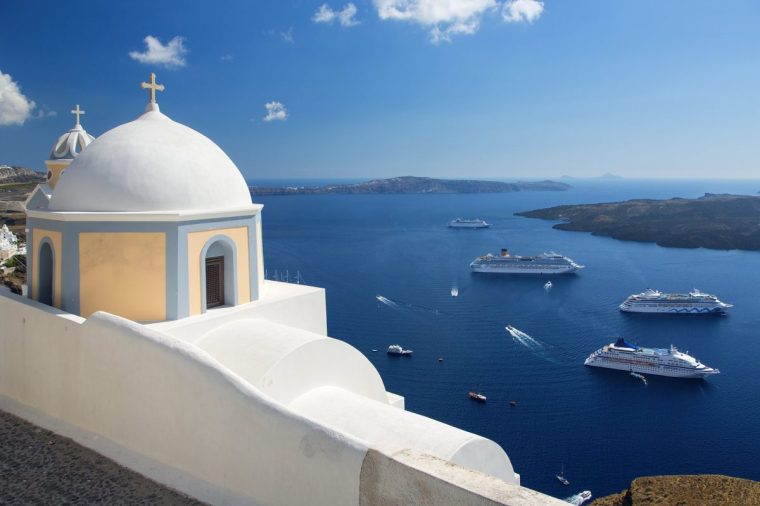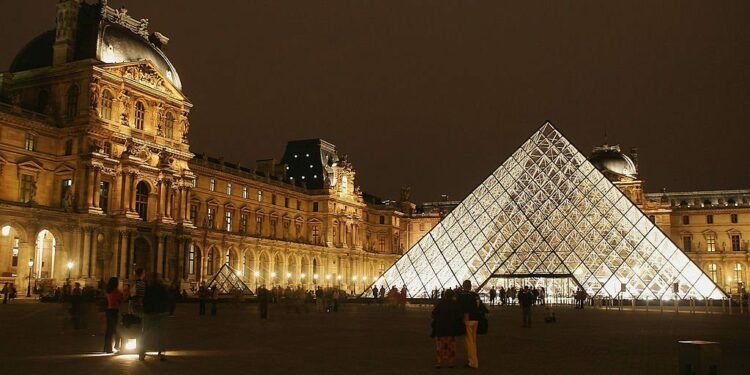Hi there France. Fully understand the problem with financing cultural heritage but I hear you’re thinking of premium charging non-EU visitors to the Louvre. UK national galleries and museums like @britishmuseum @NationalGallery are FREE to all. You’re welcome. Je vous en prie.
— Chris Bryant (@RhonddaBryant) October 25, 2024
Overtourism and two-tier payment systems
In Istanbul, foreign visitors to the Basilica Cistern pay four times as much as Turkish tourists. Other attractions in the city also have two-tier payment systems.
The Hagia Sophia Grand Mosque recently introduced a fee of 850 Turkish Lira (£19) for all foreign visitors as well as Turkish non-Muslims.
Elsewhere in Europe, some restaurateurs are allegedly being less up-front about their different charges for locals and tourists.
In Lisbon, the Expresso newspaper has suggested that some restaurants should give menus with higher prices to customers who don’t speak Portuguese.
Expresso’s report also claims that the lower prices for Portuguese speakers can be “transmitted verbally, in whispers or indicated on menus placed in inconspicuous or even hidden areas”.
Portugal’s AHRESP hospitality industry association has said it’s not aware of such practices.
Up the coast, Portugal‘s second city of Porto last month confirmed it will double its daily tourist charge in order to help fund its culture and heritage as well as practical aspects of daily life. Porto is following in the footsteps of the capital Lisbon, which has recently implemented the same tax increase for tourists.
 Lisbon has doubled its tourist tax – and Portugal’s second city has followed suit (Photo: Getty)
Lisbon has doubled its tourist tax – and Portugal’s second city has followed suit (Photo: Getty)
And it’s not just Portugal.
Last week, authorities in Venice announced that this year’s pilot scheme to crack down on overtourism in the Italian city has worked well and will be extended.
In 2025, they will almost double the number of days – to 59 – on which day trippers will be charged €5 (€4.17) to enter.
Political leaders there bemoan the fact that these visitors, who tend to spend just a few hours in Venice, clog up its streets and attractions but add little to the economy.
Greece is taking a similar approach.
Its government has decided to charge cruise passengers visiting Santorini and Mykonos €20 (€16.60).
Both islands attract millions of foreign visitors every year, with Santorini alone receiving 1.3 million cruise passengers in 2023.
Authorities say the only option is to charge tourists who only visit briefly a high amount in order to combat increased traffic, busy streets and environmental damage.
 Santorini and Mykonos will charge cruise ship tourists more than ever to visit the popular Greek islands (Photo: Sylvain Sonnet/Getty)Beyond Europe
Santorini and Mykonos will charge cruise ship tourists more than ever to visit the popular Greek islands (Photo: Sylvain Sonnet/Getty)Beyond Europe
In India, the Taj Mahal has long charged foreign visitors significantly more for entry than its own citizens. Overseas visitors pay the equivalent of £15 to visit, a far steeper figure than the £2.20 charged to residents.
In Tokyo, a two-tier payment system for residents and visitors is commonplace in restaurants.
There, overtourism and the struggling currency has seen a number of restaurants charging different prices for foreigners, although owners claim they’re not charging tourists more, rather their food costs less for locals.
This year, Japan is set to attract a record number of tourists. In response, places country-wide have been implementing tourist taxes.
Tourism authorities in Hokkaido have urged businesses to set lower prices for locals and the mayor responsible for the Unesco-listed Himeji Castle in the west has announced that he’s considering charging foreign tourists more than six times the local entry rate.
 India’s Taj Mahal is very open about their two-tier price system (Photo: Kriangkrai Thitimakorn/Getty)
India’s Taj Mahal is very open about their two-tier price system (Photo: Kriangkrai Thitimakorn/Getty)
Further south in Asia, other countries are already implementing these stringent measures.
Thailand has a two-tier cost policy across its entire national park network.
Across the country, international visitors have to fork out five times the amount its citizens do, regardless of the size or popularity of the park they’re visiting.
Over the border in Cambodia, entrance to the Angkor Wat temple complex is free for citizens but costs the equivalent of £29 for a day’s entry for tourists from elsewhere.
More than two million foreign visitors opt to pay that fee every year.
Source link : http://www.bing.com/news/apiclick.aspx?ref=FexRss&aid=&tid=671fed46867e4f4ca2833393aa8f2c97&url=https%3A%2F%2Finews.co.uk%2Finews-lifestyle%2Ftravel%2Fnon-eu-tourists-pay-more-french-attractions-3348500%3Fico%3Drelated_stories&c=7149050989106427860&mkt=de-de
Author :
Publish date : 2024-10-28 10:40:00
Copyright for syndicated content belongs to the linked Source.



